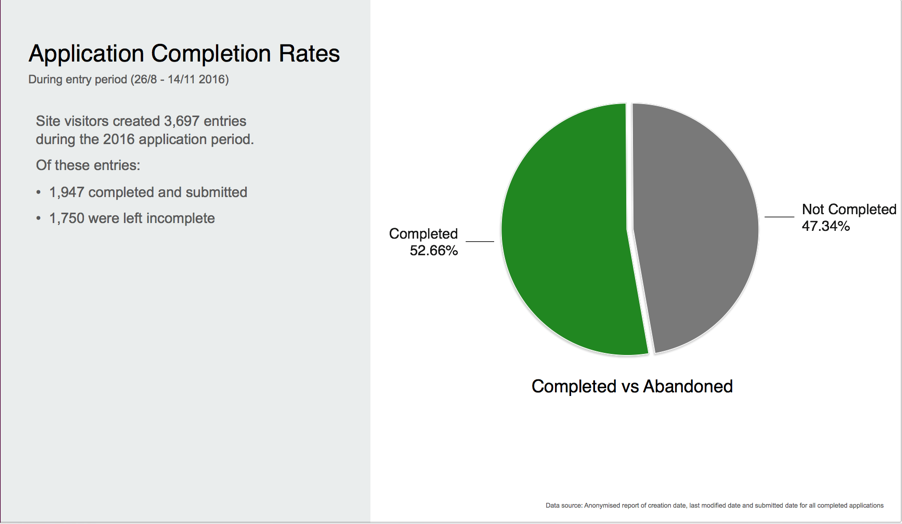
User research plays a crucial role in shaping any successful product or service. It keeps the user at the heart of the experience by tailoring it to their needs, and in turn provides real advantage over competitors. But with a growing arsenal of different research methods out there, it can be a challenge to know which is best to use, and when.
This guide offers an overview of the fundamentals for each of the most commonly used methods, providing direction on when to use them — and more importantly, why.
We’ll cover:
- the origins of user research
- discovery and exploratory research
- quant and qual, and the difference between them
- core methodologies:
- user interviews
- ethnography and field studies
- surveys and questionnaires
- analytics and heatmaps
- card sorts and tree tests
- usability studies
- further reading and resources
- key takeaways
The Origins of User Research
Product designers and engineers have incorporated user feedback into their process for centuries. However, it wasn’t until 1993 that the term “user experience” (UX) was coined by Don Norman during his time at Apple.
As the discipline of UX evolved and matured, practitioners began to use investigative research techniques from other fields, such as science and market research. This enabled decisions to be informed by the end user, rather than the design teams’ assumptions, laying the groundwork for UX research as we know it today.
That’s a quick rundown of the origins. Now let’s dive into some research frameworks.
Discovery and Evaluative Research
User-centered design means working with your users all throughout the project — Don Norman
Broadly speaking, user research is used to either discover what people want and need or evaluate if ideas are effective. The methods to achieve these two distinct outcomes can be loosely divided into two groups.
Strategize: Discovery Research
Methods that help to answer unknowns at the beginning of a project can be referred to as Discovery Research. These methods range from reviewing existing reports, data and analytics to conducting interviews, surveys and ethnographic studies. These methods ensure that you have a solid understanding of who your user is, what they need and the problems they face in order to begin developing a solution.
Execute and Assess: Evaluative Research
Once a clearer picture of the end user and their environment has been established, it’s time to explore possible solutions and test their validity. Usability studies are the most common method employed here. Evaluative research provides you with the knowledge you need to stay focussed on the user and their specific requirements.
Examples
| Discovery Research Methods | Evaluative Research Methods |
|---|---|
|
|
Quant and Qual, and the Difference Between Them
Although every design problem is different, it’s generally agreed that a combination of both qualitative and quantitative research insights will provide a balanced foundation with which to form a more successful design solution. But what do these pronunciation-averse words mean?
Quantitative (statistical) research techniques involve gathering large quantities of user data to understand what is currently happening. This answers important questions such as “where do people drop off during a payment process”, or “which products were most popular with certain user groups” and “what content is most/least engaging”.
Quantitative research methods are often used to strategize the right direction at the start of a project and assess the performance at the end using numbers or metrics. Common goals include:
- comparing two or more products or designs
- getting benchmarks to compare the future design against
- calculating expected cost savings from some design changes
 Quantitative data analysis can offer useful insights such as abandonment points on a form. This can lead to further qualitative studies to understand why.
Quantitative data analysis can offer useful insights such as abandonment points on a form. This can lead to further qualitative studies to understand why.Qualitative (observational) research techniques involves directly observing small user groups to understand attitudes, behaviors and motivations. This is where we begin to understand why something is happening and how to solve a problem.
You can optimize everything and still fail. That’s where qualitative approaches come in. By asking “why”, we can see the opportunity for something better beyond the bounds of the current best. ― Erika Hall
Qualitative research methods are also used to strategize the right direction at the start of a project, and to inform design decisions throughout the ideation process. Common goals include:
- to uncover trends in thoughts and opinions
- understand a problem more deeply
- to develop a hypothesis for a quantitative research study
 Christian Rohrer authored a popular framework for understanding user research methods, illustrating where 20 popular methods appear along three dimensions, including quantitative and qualitative. Source.
Christian Rohrer authored a popular framework for understanding user research methods, illustrating where 20 popular methods appear along three dimensions, including quantitative and qualitative. Source.Core Methodologies
So that’s enough of the background behind the methods. Let’s dive into the methods themselves. It’s worth noting that, since every project is different, there’s no quick way of strictly stating which method is best for what. However, pros and cons have been listed for each.
1. User interviews
Qualitative | Discover/Evaluate
Interviews allow you to ask questions to help see things from the participants’ perspective. They are usually recorded and later analyzed to find out what the beliefs, attitudes and drivers of users are, alongside uncovering new considerations to aid with ideation.
Stories are where the richest insights lie. Your objective is to get to this point in every interview. — Steve Portigal
Interview length, style and structure can vary depending on what you’re trying to achieve, and the access to and availability of participants. The following are some different types of interviews.
One-to-one interviews are often conducted in a lab or coffee shop, but can be undertaken almost anywhere with a little preparation. In-person interviews are preferable to remote (via phone or video) as they offer additional insights through body language. Sessions are conducted with questions that loosely follow a discussion guide. This allows you to uncover new learnings around an objective and not get sidetracked.

Focus groups are used to gain a consensus from a group of 3–10 representatives of a target audience when you’re short on time or availabile participants. Focus groups take the form of discussions and exercises and are a good way of assessing what people want from a product or service and their opinions on things. They’re not recommended for evaluating interface usability, due to their lack of focus and the potential for groupthink bias.
Contextual inquiry interviews are the holy grail of interview methods. They’re conducted within the participants’ everyday environment whilst they go about their daily activities. A researcher can observe a participant and discuss what they did, and why, whilst the activities take place. Unlike other interviews, the researcher usually summarizes the findings back to the participant at the end, offering them a chance to give final corrections and clarifications. This method is used to generate highly relevant and reliable insights from real situations, but it can be very time consuming.
For more on user interviews, there’s some great resources on the Interaction Design Foundation website.
2. Field Studies
Qualitative | Discover
Field studies involve observing people as they interact with a product, service, or each other, in their natural working or living environment (rather than in a lab) to better understand user behavior and motivations in context. These studies are usually conducted over longer periods of time than most other methods, recording extensive field notes for later analysis.
Ethnographic research involves researchers actively participating within a group setting, becoming the subject themselves. This method is particularly useful when studying a target audience that is culturally or socially different from your own, and it can uncover lots of unknowns and important considerations.
Direct observation involves passively observing from a distance (like a curious fly on a wall), allowing researchers to uncover problems and workarounds in user journeys and flows (such as retail store layouts), and also allowing for future improvements.

User logs involve diary studies and video journals, and are sometimes referred to as the “poor man’s field study”. They allow the user to generate the data for you by recording their experiences with the focus of the study at a specific time each day over a period of time. The real-time insights provided can be useful for understanding long-term behaviors such as habits, workflows, attitudes, motivations, or changes in behavior.
The post A Deep Dive into User Research Methods appeared first on SitePoint.
No comments:
Post a Comment